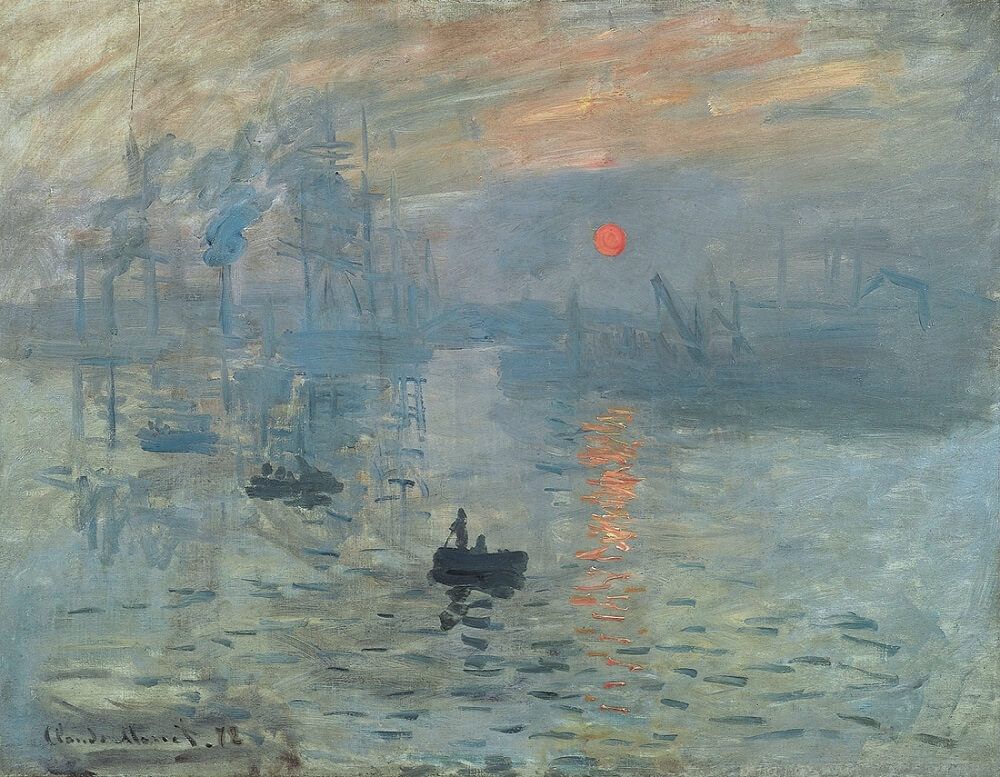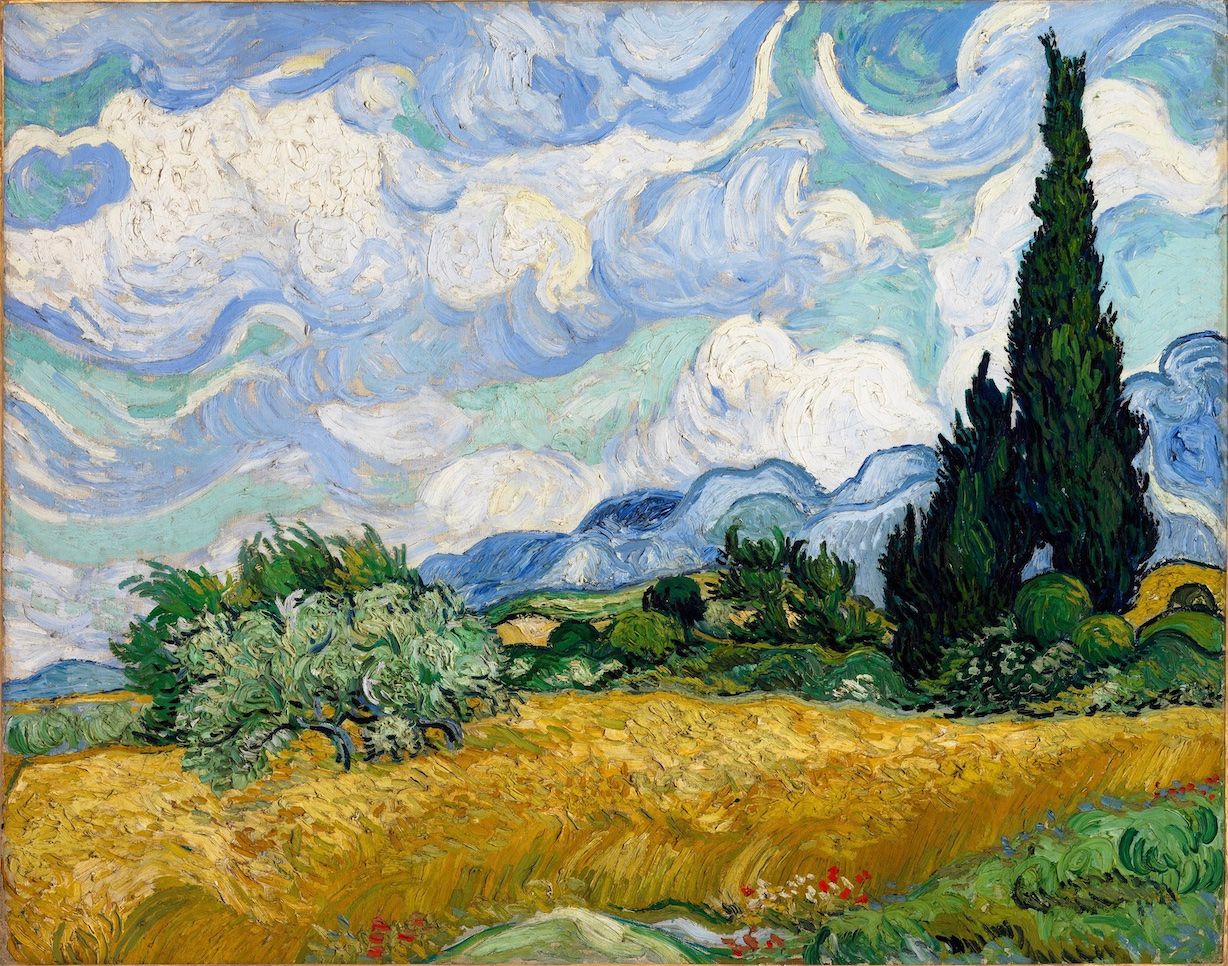sensory confrontation rationality
Is supreme rationality our ultimate pursuit?
Since the sages of ancient Greece and ancient Rome laid the foundation of rationality, people have been exploring the road of rational thinking without stopping. In the mid-Renaissance, Magellan crossed the Pacific Ocean for the first time to confirm the theory of the circle of the earth; in the seventeenth century, the scientific revolution revealed the laws of planetary motion and human blood motion... Reason seems to be able to solve all problems, even our music class today is learning ancient The rhythmic system interpreted mathematically by Pythagoras in the Greek period. Human pursuit of beauty, and what is aesthetics, seems to be the same as other natural sciences, all of which can be explained by reason.
However, is the pursuit of rationality the ultimate goal of human existence? This is my question in this article.
art is sensual
The beauty that people feel is rational beauty, but also emotional and artistic beauty. Regardless of whether the two are superior or not, what we can agree on is that the beauty of art is received through the physical senses. A piece of great music, a delicate oil painting, a magnificent church, even if you strip away its creative background and creator's thoughts, you can still gain a pure experience of beauty from the work itself. This is the aesthetics of the physical sensory realm, not the aesthetics that appeals to rational analysis of everything.

No matter how you preach the mathematical logic contained in Bach's counterpoint music, or the connection between the golden spiral and the beauty of harmony, the simple fact is that the physical senses are direct participants in the aesthetic experience.
For more than two years, Western musicians have poured their talents into the rhythm system based on the octave of Pythagoras, and relying on this note system, they have created a splendid musical culture. But on the other hand, this fixed limit on pitch has also become a constraint.
Until the 1930s and 1940s in Chicago, when jazz based on free and uninhibited African music merged with local traditional classical orchestral music, an unprecedented sound art was brewed and the boundaries of the Pythagorean rhythm system were broadened. .
Art is sometimes just a matter of color
If the art of music needs to be freed from the shackles of all rules in order to develop more fully, then the art of painting can be said to have maintained its straightforwardness and willfulness. From the collection of letters of Van Gogh and his brother, we can develop an interesting idea - the so-called art is sometimes a matter of color.
Teacher Wang Anyi summed up Van Gogh's creative thought in the collection of letters into three periods. With the passage of time, Van Gogh gradually shifted the focus of painting to color from his original observation of form.
The first period was before 1881. At that time, Van Gogh’s creations were based on the plot. The objects of the paintings were what the characters were and what they were doing. These were very important, such as “Man with a shovel” and “Take a shovel”. girl with a broom". From the perspective of painting skills, it is the period of sketching, and he wants to express these in the way of sketching. This is also the period of the plot, when colors are dormant in the shapes and behaviors of people and things, not yet awakened.
The second period was from December 1881 to September 1883, this was the period of watercolor painting, color began to appear, Van Gogh began to observe the "tone" in the picture, instead of just focusing on the plot, Strengthened the observation of the still life itself in the picture, such as a hand protruding from the background of misty dust, the chimney, stove and wooden floor in the painting... It's just that the color has not been independent, but attached to the entity. , with great rhetoric.
The third period was from September 1883 to March 1886, which was the period of oil painting and also a period of color independence. Although entity is still needed as a carrier, color has gradually become the subject. He focuses on the study of color, and when talking about a painting, he said: "I am the harmony of green, red, black, yellow, blue, brown, and gray. moved."
The half-ripe wheat field is now a dark yellowish tint, reddish or golden coppery.
It is already a reflection of the visual response here, and the entity seems to have become the attachment of the color, which exists only to divide the area of the color and to give the color the best shape.
In the process of finishing this portrait, I am going to become a painter who uses color whatever I want...

In his final days, he wrote:
I am now completely captivated by the vast and boundless fields of wheat against the mountains. The plains are vast as the ocean, wonderful yellow, wonderful, gentle green...
Pause logical analysis, open mind and senses
The argument that art is sensual has inspired my understanding of appreciating different forms of media. What people call art, literature, and masterpieces differ from simple mathematical logic in that their value is not measured by knowledge. The same piece of information, different reception methods lead to differentiated artistic experience, and the process of experience is crucial. For example, watching a 120-minute movie is a very different experience than watching a 20-minute video. The category creation of "Read XXX in XX minutes" and "Read XXX in XX minutes" is anti-art. If you read the world famous in a similar way, the feeling will be more obvious - I would even say that for many literary masterpieces of great achievement, once told in a condensed way, it is almost nothing.
If you are influenced by the utilitarian concept of secular society, you can remind yourself at this moment that to appreciate a work, you don't have to say two or three things, you don't have to go through speculation and come to a new conclusion that interprets a certain type of event. You can even safely forget the content - just as you won't be upset about forgetting what you played with your friends at the playground years ago.
Once you figure out that art is nothing but a sensory experience, you can see why we should take art with a light-hearted but serious attitude. It is said that it is easy because art can be used for entertainment and can be enjoyed by every ordinary person, regardless of your level of knowledge and social status. To appreciate the so-called "advanced" art, you don't need to take a very serious attitude, just amplify your desire for exploration and curiosity, and open up your mind and senses. Not just worthy of sloppy treatment, it's a key difference between them and FMCG. Art deserves respect. Just like watching a movie, you need to eliminate distractions, isolate noise, turn off the lights, don’t talk and discuss in the middle, and focus on starting from the beginning to the end.
The confrontation between sense and reason
At the beginning of the article, I questioned the supremacy of rationality. This is not an empty claim, but is reflected in historical development.
Before the 15th century, people could not restore the human eye image on the plane. Starting from the imitation of the pinhole imaging principle by Brunelleschi in Florence, he created the perspective painting technique, which brought great inspiration to the painters and architects at that time. From this, people acquire the ability to express three-dimensional space with flat drawings. It was not until the advent of photographic photography that the level of restoration that planes could achieve reached a new height.
However, as you might think, perspective and photography are not the same. The pursuit of reproducing the real world, represented by perspective, has two divisions. One is a rationalist view represented by Newton's classical mechanics, which emphasizes obeying physics, emphasizing that sensory experience is false, and using scientific concepts to reproduce the real world; the other is represented by Goethe's "Theory of Color". , a branch of romanticism, they explore the visual experience at the physiological level, emphasizing the reproduction of the sensory experience of the human eye. The former is the pursuit of reproducing the objective physical world, while the latter is the pursuit of reproducing the physiological sensory world.
The representatives of the first tribe were Descartes and Newton. Descartes compared the eye to a camera obscura, thinking that like the camera obscura (the predecessor of the camera), what people see is a copy of the natural world. Newton continued the idea of Descartes, using prisms to refract sunlight and decompose light. In this branch, sensory experience always seems to be full of deceit, so human beings must pursue rationality.
The representative of the second branch is Goethe. Goethe described the visual persistence effect of the human eye in detail in "The Theory of Color". From the projection of light in reality, he suddenly looked into a dark place and observed how the "light and shadow" changed. What Goethe described was the pure visual experience of the eyes, which was separated from the logic of light and perspective, which belonged to the physiological world from the end of the 18th century to the beginning of the 19th century. For a time, a gap appeared between the optical, external-oriented rational knowledge and the physiological world that parses the internal sensory mechanism of human beings.
In the end, it appears that the second branch has triumphed. The application of the principle of human binocular imaging gave birth to the stereoscopic mirror; the application of the visual persistence effect laid the foundation for the birth of the film. These are not the rational reproduction of the objective world, but the use of physiological knowledge to deceive the eyes. People are no longer obsessed with external nature, but choose to analyze the formation logic of vision. In this confrontation between sense and reason, sense finally won the victory.
We are miracles in the universe
However, even if we go further and further on the road of creating sensory experience, it must not be a regression of human civilization.
Well-known scientist Freeman Dyson said that there are many amazing phenomena in the universe, which make people feel incredible and mysterious. At the same time, he also said that the most amazing thing in the universe is ourselves. Not long after we evolved from ordinary apes, we have the talent for music, painting and holding sports games. We will have various pursuits and explorations, many of which are neither for survival nor for making the group stronger. This is not in line with animal instinct, and evolution cannot explain it.
Here's what I'm saying: it's us humans who are truly amazing. As far as I know, humans have gathered a variety of different abilities in the "self" species. Darwin's theory of evolution cannot explain this phenomenon. It seems to be some kind of miracle. --Dyson, "About the Universe"
Related reading:
1. "Offline Copy", Li Ting (Editor-in-Chief), Electronic Industry Press, 2021
2. "Reminiscing the Age of Handicraft Industry", Wang Anyi, Oriental Publishing Center, 2021
3. How to Listen to Jazz, Ted Gioia, Beijing United Publishing Company, 2018
4. "Offline · Symbiosis", Li Ting (Editor-in-Chief), Electronic Industry Press, 2021
Like my work? Don't forget to support and clap, let me know that you are with me on the road of creation. Keep this enthusiasm together!
